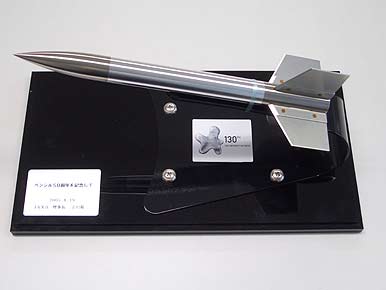
Restrictions on aeronautical research placed on Japan by the GHQ were lifted upon the signing of the Treaty of San Francisco in 1951. Soon after, Professor Hideo Itokawa of the University of Tokyo’s Institute of Industrial Science established the AVSA (Avionics and Supersonic Aerodynamics) research group at the Institute on April 16, 1954 to research using rockets as means for transportation. The group conducted a horizontal launch test of its Pencil rocket in Kokubunji, Tokyo in April 1955. The Pencil rocket was the world’s smallest rocket at the time, with a length of 23cm, diameter of 1.8cm and weight of 200g. Their research later led to the development of the Baby rocket and the Kappa rocket. The group launched a two-stage Kappa rocket K-6 model (length: 5.4m; weight: 255kg) to an altitude of 60km in September 1958. They went on to successfully launch a K-8 model to an altitude of 200km in July 1960. The K-8 rocket was the first in the world to measure the ionic density of cosmic rays. Rocket development later shifted from the L-model to the M-model, with Japan launching numerous scientific satellites





